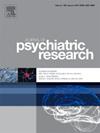Efficacy of individualized noninvasive brain stimulation targets in treating psychiatric disorders: A network meta-analysis
IF 3.2
2区 医学
Q1 PSYCHIATRY
引用次数: 0
Abstract
Background
Noninvasive brain stimulation (NIBS) techniques have gained increasing attention in psychiatric research and treatment. Target selection for NIBS is becoming increasingly individualized based on brain morphology or function; however, the extent to which individualized targeting improves treatment outcomes in psychiatric disorders remains a matter of debate.
Methods
We systematically searched PubMed, Scopus, Web of Science, PsycINFO, ProQuest and Embase published up to April 30, 2024, comparing individualized NIBS targets, standardized group-based targets, and sham stimulation in psychiatric populations. A network meta-analysis was conducted to compare the effectiveness of these approaches across different psychiatric disorders.
Results
A total of 35 studies comprising 1,651 patients were included. Surface under the cumulative ranking (SUCRA) plot showed that individualized targeting ranked highest among the three approaches; however, the difference between individualized and group-based methods was not statistically significant (Mean Difference (MD) = -0.045; 95% CI: −0.244 to 0.333; p = 0.310). Subgroup analysis further categorized individualized methods into PET-, MRI-, fMRI-, and EEG-guided approaches. PET-guided targeting demonstrated significant superiority compared to both sham and group-based targets (MD = -0.744; 95% CI: −1.450 to −0.037; p = 0.039). Disorder-specific analyses revealed varied results in the forest map (schizophrenia: p < 0.01; OCD: p = 0.11; MDD: p = 0.22; addiction: p < 0.05).
Conclusions
There is a growing trend suggesting that individualized NIBS approaches may be more effective than standardized protocols. However, further validation, especially through high-quality, large-sample randomized control trials focused on PET-guided targeting is needed. From a clinical perspective, structural MRI provides a practical option for anatomical targeting, while EEG and fMRI offer promising, cost-effective alternatives for capturing functional dynamics. Future research should prioritize long-term follow-up studies and explore clinically feasible individualized strategies to advance precision neuromodulation in psychiatric care.
个体化无创脑刺激靶点治疗精神疾病的疗效:网络荟萃分析。
背景:无创脑刺激(NIBS)技术在精神病学研究和治疗中越来越受到关注。基于脑形态或功能的NIBS靶点选择正变得越来越个性化;然而,个体化靶向治疗在多大程度上改善了精神疾病的治疗效果仍然是一个有争议的问题。方法:系统检索PubMed、Scopus、Web of Science、PsycINFO、ProQuest和Embase截至2024年4月30日发表的文献,比较个性化NIBS靶点、标准化群体靶点和精神病学人群的假刺激。一项网络荟萃分析被用于比较这些方法在不同精神疾病中的有效性。结果:共纳入35项研究,1,651例患者。累积排序(SUCRA)图下显示,个性化定位在三种方法中排名最高;然而,个体化方法与分组方法的差异无统计学意义(Mean difference (MD) = -0.045;95% CI: -0.244 ~ 0.333;p = 0.310)。亚组分析进一步将个体化方法分为PET-、MRI-、fMRI-和脑电图引导方法。pet引导靶向与假手术和分组靶向相比均显示出显著优势(MD = -0.744; 95% CI: -1.450至-0.037;p = 0.039)。疾病特异性分析在森林图中显示出不同的结果(精神分裂症:p)。结论:越来越多的趋势表明,个性化的NIBS方法可能比标准化的方案更有效。然而,需要进一步的验证,特别是通过高质量的、大样本的随机对照试验来关注pet引导的靶向。从临床角度来看,结构MRI为解剖定位提供了实用的选择,而脑电图和功能磁共振成像为捕获功能动态提供了有前途的、经济有效的替代方案。未来的研究应优先考虑长期随访研究,探索临床可行的个体化策略,以推进精神病学护理中的精确神经调节。
本文章由计算机程序翻译,如有差异,请以英文原文为准。
求助全文
约1分钟内获得全文
求助全文
来源期刊

Journal of psychiatric research
医学-精神病学
CiteScore
7.30
自引率
2.10%
发文量
622
审稿时长
130 days
期刊介绍:
Founded in 1961 to report on the latest work in psychiatry and cognate disciplines, the Journal of Psychiatric Research is dedicated to innovative and timely studies of four important areas of research:
(1) clinical studies of all disciplines relating to psychiatric illness, as well as normal human behaviour, including biochemical, physiological, genetic, environmental, social, psychological and epidemiological factors;
(2) basic studies pertaining to psychiatry in such fields as neuropsychopharmacology, neuroendocrinology, electrophysiology, genetics, experimental psychology and epidemiology;
(3) the growing application of clinical laboratory techniques in psychiatry, including imagery and spectroscopy of the brain, molecular biology and computer sciences;
 求助内容:
求助内容: 应助结果提醒方式:
应助结果提醒方式:


